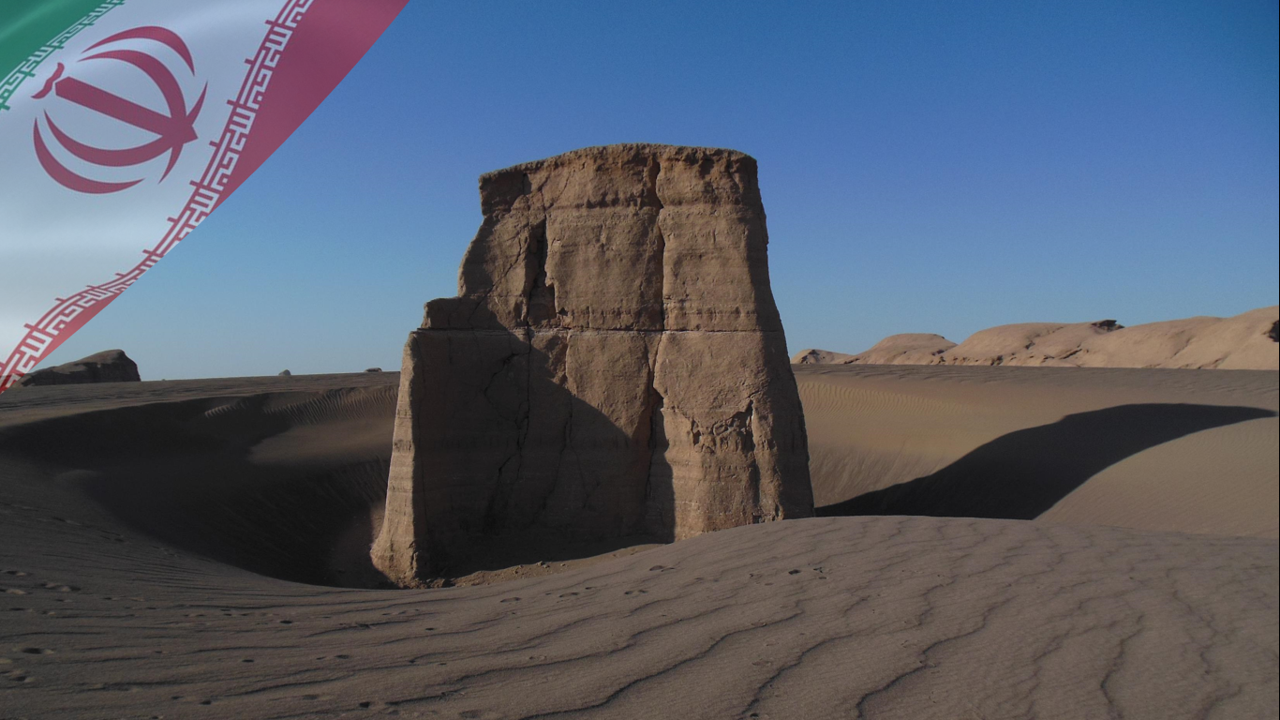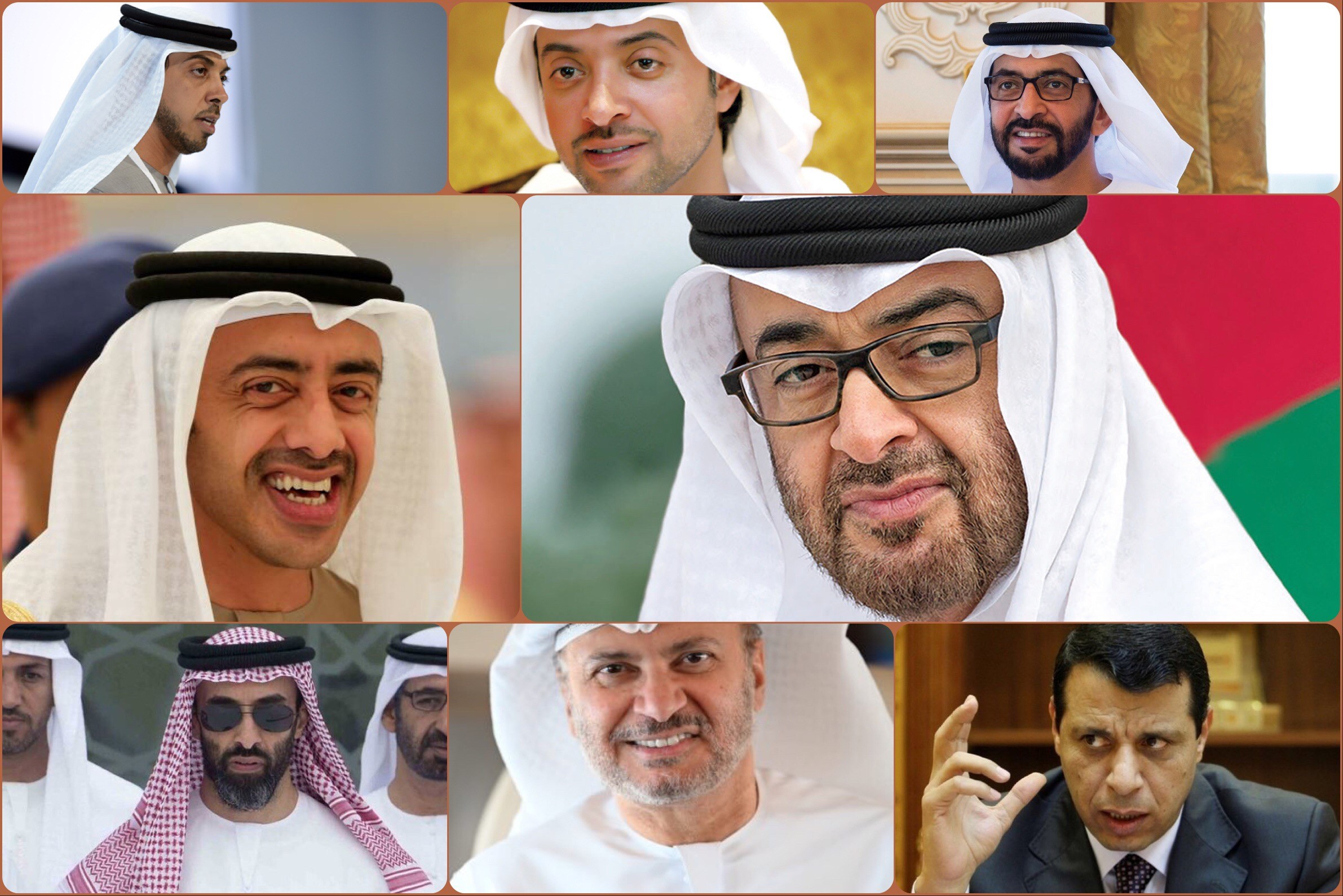The world is sinking ever deeper into the Corona crisis these days and there is no end to it on sight. No one is really sure, when this crisis will end, yet as most of the political interest now focuses on the matter of Corona, from aids and possible new outbreaks to solutions and economic consequences, unfortunately the struggles of the Middle East does not seem to stop. The war in Yemen is ongoing relentlessly, just like the war for Libya. The Gulf, which showed the biggest level of regional cooperation and even possible unification in the near future even a decade ago is ever more fragmented. The blockade against Qatar is not about to be lifted, even in the Corona crisis, and the views between these six states could not be more different on matters like Iran, Syria, or even in Yemen. More than that, as we saw not long ago, the recent change in power in Oman seems to even deepen the division.
Indeed the Arab world lived through an almost unprecedented cataclysm and transformation in the last decade following the so called “Arab Spring”. This might come to an end soon, with the reintegration of Syria into the Arab League, the reemergence of Algeria and Morocco to more initiative role and with new, active leaders in Tunisia and Oman. Nonetheless, much of this long crisis, characterized by Gulf overpower, struggles with Iran, regional and internal wars and the destruction of the GCC seemingly beyond repair is attributed by many analyses to Saudi Arabia, and in the last few years to its restless Crown Prince, Muḥammad ibn Salmān. Which is less characteristic to the Saudi kingdom, rarely taking the initiative and mostly resorting to a more illusive role of coordination behind the curtains. The relatively sudden emergence of Riyadh as an active forefront player is a new phenomenon, undoubtedly connected to the personality of the Saudi Crown Prince. Yet in the shadows a state and its ruling circle managed to stay remarkably hidden from major strategic analyses, and hold on to a more exotic role of a modern, developed and favorable Gulf state. Far from the main political battles, at least seemingly, the Emirates kept its image of a favorable tourist destination and a heaven for Western investments.
That has much to do with the appearance of a decentralized state lead by an almost unknown and uncharismatic leader, under whom the seven small states managed to stay independent to a great level. Dubai, with its luxurious projects and opened image to the world kept the Emirates in the general imagination as a state almost from another world, far from the problems of the Middle East. Yet in the last decade a slow and almost sudden transformation almost on the scale of a revolution occurred there. In it the real leader of state, Abū Zabī Crown Prince Muḥammad ibn Zāyid steadily sidelined completion. First in Abū Zabī, than in the Emirates, and in the last few years managed to turn the table around in the region, making the Emirates one of the most important Arab players. Remarkably, Muḥammad ibn Zāyid managed to turn even most of his defeats to his advantage, and created a management remarkably efficient. Into this leadership he not only managed to recruit most of his brothers, but even other Arab figures. Since by now, almost hidden from most assessments, the Emirates have become one of the biggest decision makers in the Arab world. So this week we look into the remarkable journey of this ambitious Crown Prince, and the secrets of his fearsome management.
Tribal power
In most monarchies in the Gulf with the deepest tribal traditions the transformation of power in not an easy assignment. Since most of these states are new in their current forms, state management was created on personal ties linking the state founder ruler to the leading dignitaries, and not on institutions filled upon qualifications. That is where Oman, Kuwait, or Bahrain greatly differs from Saudi Arabia and the Emirates, as these are practically the unchanged monarchies of the long established royal families wrapped in new form. That is why they show forms of the more conventional monarchies. Yet Saudi Arabia and the federally structured Emirates had to be practically invented after the founding fathers.
The current Saudi state – the third in the history of the House of Sa‘ūd – was carved out by a series of wars and cunning political deals at the beginning of the twentieth century by the first king, ‘Abd al-‘Azīz Āl Sa‘ūd. His sons are ruling Riyadh ever since, with the present monarch, King Salmān being almost the last one. As ‘Abd al-‘Azīz left no stabile institution behind, but a huge number of children from different wives, it was only natural that in time a completions would evolve, in which full brothers would form up coalitions. The most powerful was the so called Sudayrī Seven, the seven brother of King ‘Abd al-‘Azīz from Queen Ḥuṣṣa as-Sudayrī. Ever since the oldest among them, Fahd took the throne in 1982, they practically monopolized ruling positions. Much of the current crisis and internal problems of Saudi Arabia can be attributed to the fact that as with the first generation of the state founder slowly dies out, the Sudayrī group tries to establish a direct – and so far unprecedented – direct linage and rule for itself. Which with such a huge family has many enemies.
The Emirates for some time now faced a similar problem, but with the spin of a federal structure. When the nine little states of the Gulf gained their independence in 1971, two, Qatar and Bahrain chose to take a path of their own. Six formed the United Arab Emirate with the seventh – Ra’s al-Hayma – joining the following year. In the state all seven statelets enjoyed a great level of autonomy, almost independence, in all their internal affairs, which to a big extent exists even now. Only monetary, defense and foreign matters were unified. But the relative size, financial power and most importantly the personal charisma of its ruler gave Abū Zabī the leading role, which it has today. This charismatic man was Sheikh Zāyid ibn Sulṭān Āl Nahyān, who was deemed as a primus inter pares, and in time became the practical leader of the Emirates for the outside world. Gaining respect all over the Arab world as a constructive figure. Some of his powers over others were codified, but much rested upon his personal standing amongst the sheiks, who he greatly respected. With his passing the same question prevailed, which some many times tore the Saudis apart. Which son, or clan would follow the state founder? Thought Sheikh Zāyid had six official wives – with some unofficial ones -, the question seemed relatively easy, as from his first wife he had a son, and only one. And since this wife, Queen Ḥuṣṣa was also from the Āl Nahyān ruling family, that made their son, Halīfa an unquestionable pure blood, and heir impossible to challenge in tribal mentality. He became Crown Prince of Abū Zabī in 1969, so even before the UAE came to exist, and in time took a number of leading roles in the state. He became the second man of his father, and by the early 2000s he was practically the ruler. When Sheikh Zāyid died in 2004 Halīfa took over with ease. Though he soon launched an internal reform program with elections to the federal bodies, he was always a conservative and less characteristic ruler. Much more of caretaker than an ambitious leader. That showed well in 2011, when he backed his traditional allies in Riyadh and Doha by supporting the interventions in Libya, Yemen and Syria. While he was adamant to protect fellow Gulf monarchs, like he did in the case of Bahrain.

To his bad luck, however, he not fell ill soon after his ascendence to the throne, but has rather ambitious and able brothers, all eager to prove their worth.
The children of Fāṭima
Halīfa was already in ill health in 2014, when he suffered a major stroke, which lead him almost incapacitated. He barely ever appeared to the public ever since. With his demise a struggle between the other children of Sheikh Zāyid have started, in which the sons of Queen Fāṭima have prevailed. Sheikh Zāyid and his third official wife, Fāṭima bint Mubārak al-Katbī – a lone child and an ambitious woman from humble backgrounds – had six sons and two daughters. Thought Sheikh Zāyid married several times after her, and there are children from these marriages, her new clan is the most numerous. And by now the most powerful. She could not secure power for her children against the only “pure blood” son, faith gave that back to her.
The eldest among Queen Fāṭima’s children, Muḥammad is the most ambitious and by now the practical leader for not only Abū Zabī, but the Emirates and even the Middle East to a certain extent. Born in 1961, he was initially educated in Rabat under a false name and was classmate of Muḥammad VI, current king of Morocco. Thought later he got a military education in the Emirates and in Sandhurst, England, his first steps hardened him. Noticeably at a certain stage he was educated by a personal tutor of the Egyptian Muslim Brotherhood. He enjoyed a rather mediocre military carrier, and only in 2003 his father appointed him Deputy Crown Prince of the Abū Zabī, securing a continuity in case his favorite Halīfa’s health would fail. A year later, becoming Crown Prince he started his gradual ascendence to the highest levels of power, which did not seem promising at first, as his elder brother have several sons. So it was expected that he could not hold on to his title for long. Yet with high efficiency he managed to sideline his competition, mostly the children of Halīfa, who now all enjoy only titular government, or military titles, or retired to business.
His biggest aids were his brothers Ḥamdān, and ‘Abd Allah. Ḥamdān looking almost identical to his elder full brother only got limited education in the Emirates and is a less ambitious type, but was Deputy Prime Minister – the Emirati Prime Minister by law is always the ruler of Dubai – between 1997 and 2009. Meaning he was sooner introduced to the internal politics. ‘Abd Allah, the smallest son of Fāṭima is equally ambitious and was appointed in 2006 as Foreign Minister. A title he still holds and probably got by the help of his two elder brothers. He is a highly active person on the international stage, having launched a number of international initiatives and being FAO Goodwill ambassador since 2010. He is reportedly the closest in mindset and behavior to his brother Muḥammad. In time his roles as actual leader of foreign policy were limited in favor of another aid, he is still a valuable member of the family as the friendly and active face of the state for the Western world with his smooth and bright personality. These were the first steps, as the sons of Fāṭima started to sideline not only other Ibn Zāyid brothers in the highest offices, but even the heirs of the other emirates.
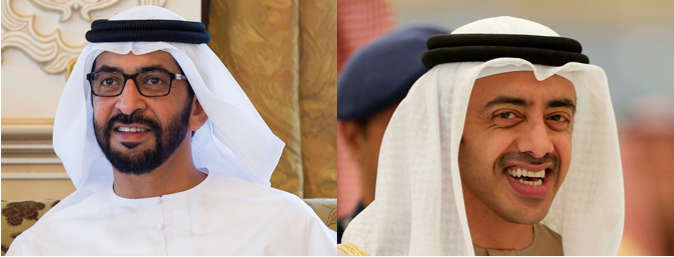
The third eldest brother, Hazzā‘ has made a name for himself in sports and in literature, as he lead several sport associations and he is a well cited poet. Though less talented, and now only holding titular governmental positions, he contributed to the legacy of the brother with two very important positions. In 2006, almost a year after ‘Abd Allah became Foreign Minister, Hazzā‘ was appointed National Security Advisor, slowly taking over the security apparatus from his uncle and from the management in Dubai. Which in time Muḥammad ibn Zāyid utilized well. Also the same year he became Chairman of the First Gulf Bank, the biggest banking asset in the Emirate at that time. He is now the Vice President of the the Executive Council of Abū Zabī, with is practically equal to a Prime Ministerial position within the emirate itself. That is still an important power position, but minuscule in the federal system and is completely under the influence of his elder brother.

The real caretaker, or personal secretary of the brother, appearing almost inseparable from Muḥammad in another brother, Manṣūr, a rather cheerful and smooth personality. Manṣūr also held a carrier in sports as a noted equestrian and still holds many state sport functions, and was first introduced to power in the late ‘90s. He became Chairman of the First Gulf Bank – a position he gave directly to his brother, Hazzā‘ – and in 1997 was appointed as chairman of the Emirati Presidential office. That made him a practical personal secretary of Sheikh Zāyid in his late years, which experience he also used later for the benefit of his brothers. He is also an influential businessman sitting on the Supreme Petroleum Council, having interests in oil and real estate firms, in the English Premier League, and was the virtual founder of the Emirati media empire inviting Sky News to Dubai, launching Sky News Arabia in 2012. In which he also has shares. Since the emergence of his brother Muḥammad he held several important governmental positions, mostly in the field of services and communications. His role is the closest to a classical interior minister without security concerns, and he is the personal secretary of his older brother, the practical daily administrator of the state’s internal affairs. His other big contribution the his clan’s power was his second marriage in 2005, when he married Manāl bint Muḥammad ibn Rāšid Āl Maktūm, President of the Emirati Woman Association and the eldest daughter of Dubai’s monarch, Muḥammad ibn Rāšid Āl Maktūm. A political marriage by all means, secured the strong functional link between the two most powerful statelets with the UAE. Which in turn, and for a long time, secured strong political and financial backing from Dubai to Muḥammad ibn Zāyid in his quest. Manṣūr is believed to be the most loyal and most trusted supporter of the Crown Prince, who takes off the burden of daily internal affairs from his brother’s shoulders.
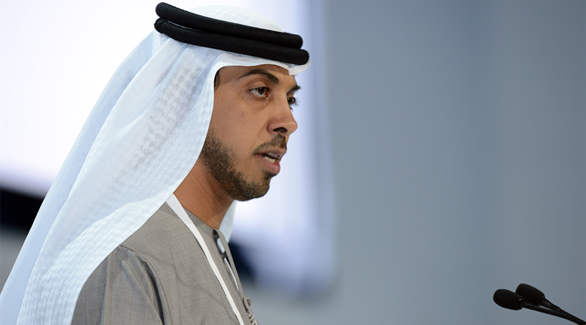
Muḥammad ibn Zāyid paved his way to power beautifully, in which his full brothers were his biggest help. Some are still essential assets for him, while others were slowly sidelined for a new inner circle. While the former management is still important, the new team has became a more shady group running the real and influential policies of the Emirates behind the peacefully exotic facade. In this, only one, the most powerful, yet most elusive of the brothers got place. The fourth among Fāṭima’s sons, Ṭaḥnūn.
The three musketeers
Ṭaḥnūn is still once of the least known princes of the Emirates, regardless becoming Deputy National Security Advisor around 2000 and replacing his brother Hazzā‘ as National Security Advisor in 2013, a post he still hold. Unlike most of his brothers he stayed far from the limelight for long pursuing sports and martial arts mostly abroad, until he returned to jump into the business life successfully. The following video is one of the few documentaries to show more about him.
He was the one, who transformed the Emirati State Security Service into a huge clandestine network and planned most of the intelligence and even many military operations in the region. He was still fresh in the his post, when in 2015 the war on Yemen was launched. Which Abū Zabī, as we saw with our previous editions dealing with Yemen, utilized perfectly, regardless the military failures and complete breakdown of the original idea for the takeover of Yemen. Ṭaḥnūn is specifically active in the Gulf, as most intelligence operations in the neighboring states run under him, like in Iraq, or in Oman. Few public pictures exist of him, he never gave interviews, his characteristic sunglasses inseparable from him only increase the mystery around him. Only in the last two years or so he started to appear at all in the news. However, he noticeably never speaks, like when recently the Crown Prince held a online governmental meeting over the Corona Virus, he was the only state official to appear, but not to say even a word. This was also a noticeable moment as there was no any notion whatsoever to the ruler of the state, and Muḥammad ibn Zāyid appeared with an impression that he was in fact the ruler of both Abū Zabī and the Emirates. Even in the signing of the Riyadh Agreement between the two foreign backed Yemeni government in December 2019, which is claimed to be one of Ṭaḥnūn’s biggest achievements, he only appears in two pictures in the background.
The other shady character of this inner circle also made a rapid debut into the Emirati state administration, right after the rise of Muḥammad ibn Zāyid and his brothers. And he is not even one of the Ibn Zāyid brothers. That person is Anwār Qarāš, an Emirati born in Dubai – from where people rarely can rise to position open the rival Abū Zabī – with extensive Western education from universities like George Washington, and Cambridge. That makes him having the best personal connections with Western politicians. In 2006 he was appointed as Minister of National Assembly Affaires, a low profile position to get familiar with the administration, yet two years later he was made State Minister for Foreign Affairs. He still has this position and that makes him the second Foreign Minister.

Such model in not unfamiliar in the Gulf. Long term Omani Minister Yūsaf ibn ‘Allāwī has the same position, thought that is became the nominal position is reserved for the Sultan. Therefore in Oman that position in fact means effective Foreign Minister. Saudi Arabia since 2005 knows the same system, though more as a titular role. In December 2018 the most active promoter of the war in Syrian and anti-Iran rhetoric Foreign Minister ‘Ādil al-Ğubayr was replaced with the more prudent and reconcilable Ibrāhīm al-‘Assāf, as part of the rapprochement effort that time with Damascus. As that failed he was replaced with less than a year later with Fayṣāl ibn Farhān Āl Sa‘ūd, the current minister, so ‘Ādil al-Ğubayr was not reinstated and so far has become as a sort of retired Foreign Minister, or traveling ambassador with no real power. In the Emirates, however, mostly by the same idea as long as there is an indispensable person a new title is created for him, Muḥammad ibn Zāyid’s grip on the state was still not secure in 2008, and could not allow his brother ‘Abd Allah to be replaced. Yet he needed a more talented and more connected close Foreign Advisor, who in time took over most of the Western, or Western oriented affairs. That was Qarqāš, who is also an illusive figure, most appearing a sort of spokesman of Muḥammad ibn Zāyid. Yet he was personally responsible for a great many Emirati maneuvers in the last decade. He was an active promoter of the war over Syria and a regular guest at the “Friends of Syria” summits contemplating on military intervention, and he is one of the political architects of the blockade against Qatar since 2017.
It it lesser known, whether Qarqāš brought in the third member of the inner circle, or it was Ṭaḥnūn, but Qarqāš paved much of his later career. And that person is not even Emirati. Muḥammad Daḥlān was once one of the big hopes for the next generation of Palestinian politics, being a close associate of late Yāsir ‘Arafāt, an efficient security chief for the Fataḥ, and a staunch enemy of Ḥamās. Which is rather interesting, given he is from Gaza. When ‘Arafāt was in his last hours Daḥlān was even member of the five member committee running the West Bank, but in the struggle for power he fell out with Maḥmūd ‘Abbās. Who even accused Daḥlān of poisoning and thus assassinating ‘Arafāt, which is not entirely impossible, given that in the last few years there was tension between the two, only ‘Arafāt was not strong enough anymore to rid himself from his fearsome security chief. That is the time he reconciled even with Ḥamās in a gamble to create a unity government sidelining his party rivals, and took use of his connections to the Israeli services, which he probably developed during the five years he was in prison, or following the Oslo Accord, when as a security chief he had to work very closely with the Israeli authorities. Yet his luck finally run out in 2011, when he was expelled from the Fataḥ, and was later sentenced for imprisonment. That is when he moved to Abū Zabī, where he already developed excellent connections. Only a year before, in 2010, he was the mastermind behind the famous assassination in Dubai of Maḥmūd al-Mabḥūḥ, Director of Ḥamās’s ‘Izz ad-Dīn Qassām Brigades. That was not only a brilliant hit against the rival Ḥamās, but worked for the discrediting of Dubai, the removal of its famous police chief at the time, and curbing its influence within the Emirates.
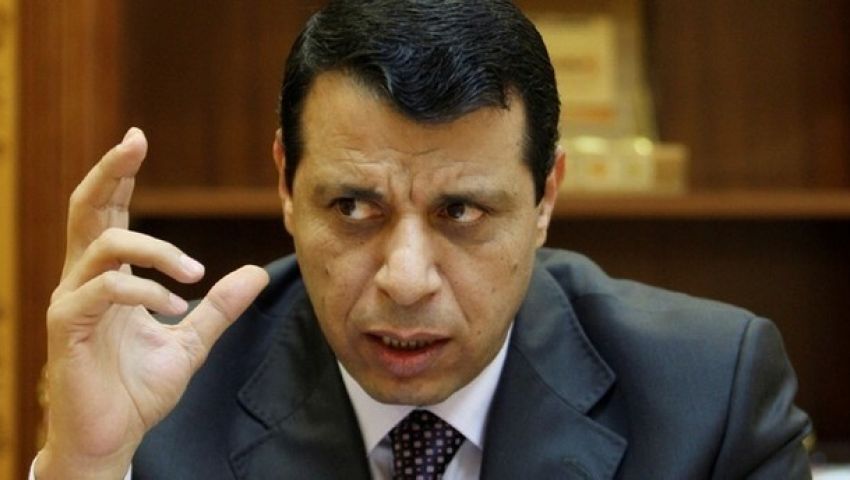

Given the good connection Muḥammad ibn Zāyid and the Emirates had with Serbia, what was greatly enhanced by the personal connections Daḥlān in many former Socialist European states, which were supporters of the Palestinian state, a new strong bond developed, and Emirati weapons contractors flooded the Serbian weapons market. This was helped by the fact that current President Vučić was previously Minister of Defense, and has good personal connections with Muḥammad ibn Zāyid. Daḥlān fostered, possibly created this connection, which in Belgrade was viewed extremely favorably finding a powerful against the Turkish presence in the Balkans, most visible in Kosovo, Macedonia and Albania.

In exchange Daḥlān received a Serbian citizenship in 2012 for himself and the whole family, and a Montenegrin one a year later. Soon enough his close connections were put into good use in Egypt, where the Emirates pulled the strings behind the military coup there in the summer of 2013. Which was move primarily against Qatar, supporting the Muslim Brotherhood government lead by late President Mursī. And since then Daḥlān worked very closely with the Egyptian services, under Emirati guidance. He had allegedly contributed to the 2016 military coup attempt in Turkey, a major rival for Egypt and a close ally for rival Qatar. Also in connection with the Egyptian, he was one of the main coordinators between the Emiratis and the Egyptians in Libya and securing support and funds for General Ḥalīfa Haftar. Above all, however, utilizing his knowledge of Hebrew and connections to Israeli politicians, he paved the way for Gulf-Israel rapprochement. Which with the good advises of Qarqāš, was not directly taken on, but harnessed via the Saudi Crown Prince, being under the influence Abū Zabī. And as the last weeks we saw, Emirati services lead by Ṭaḥnūn prevented a recent coup attempt in Riyadh.
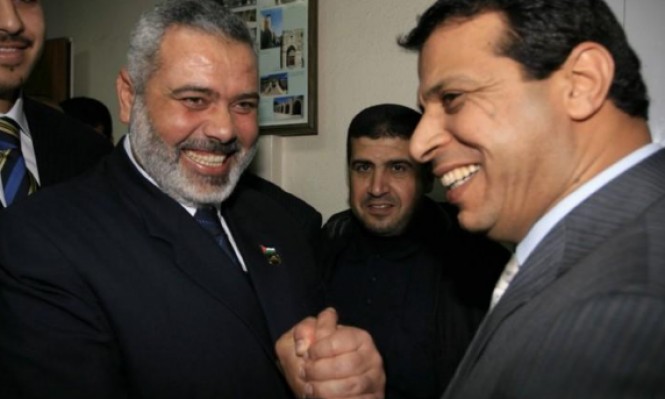
In fact Ṭaḥnūn and Daḥlān form a perfect team. The latter recruits mercenaries and uses his connections in the Balkans and the Arab world, while Ṭaḥnūn backs him up with support and more active political-military decisions.
Local and regional power
By the use and the effectiveness of this powerful family circle practically transformed the Emirates in the last decade from a federal state, to a strongly centralized system, with only minor local authority left to local rulers. In this process all major events were carefully exploited. The economic crisis in 2008 was used to tame Dubai and curb its potential, like so many steps after. The war in Yemen was used internally to limit the authority of the heads of the other five statelets. With all these steps the Emirates became a major power center, bypassing the Saudis with their alliance of Egypt, but always using Riyadh as a front.
The changing faces from Doha to Damascus
The real power of this emerging power center is its secrecy and adaptability. Seldom we here about the Emirati connections with Serbia, which are in fact huge. Nor amount the role it plays in the “Deal of the Century”, or the Libyan case. Most of these are in fact driven by the same old struggle, to create a stabile sphere of influence in the Gulf. That is practically achieved with the Saudis, putting and safeguarding a protégé of Muḥammad ibn Zāyid to be the next king. Several, so far failed attempts were made against Oman, and it is likely to continue, but as Oman is not taking steps against Abū Zabī, unlike Qatar, that stays on low level for the moment. Bahrain was occupied and Kuwait kept in check via the Saudis. The only main obstacle was Qatar, which also strived to be the strongest guiding ally for the Saudis. That was perfectly clear in 2011 with the “Arab Spring”. Former Qatari Foreign Minister Ḥamad ibn Ğāsim admitted that in an interview in October 2017 about the blockade started that summer that back in 2011 Qatar suggested the intervention in Syria to Riyadh, which gave the permission. Noticeable Libya, unlike Syria, was a primarily Emirati maneuver, and that all was part of the rivalry over the new possible positions to be taken in the region, and for gaining the favor of the Saudis. Both races were practically won by Abū Zabī, regardless the initial successes of Doha in Egypt, Libya, Yemen and Syria, and by now they secured Riyadh for themselves.
Yet they never managed to break Qatar, and that drives most of the regional moves in the last few years. It has become clear that Qatar cannot be broken directly, but would fall easily of the support for it is broken. That was tried many times using Egyptian against Turkey, even supporting the economic war of the US against Ankara, but that brought no success and the Turks this summer inaugurated yet another base in Qatar. The summer was busy putting Iran under pressure, to cut the line this way, but failing to achieve this the Emirates rushed to sign a security protocol. Because the real aim was never Iran. And recently the same quest manifested in a highly publicized move, when Muḥammad ibn Zāyid called Baššār al-Asad on the phone to promise Emirati support for Syria in the Corona epidemic. Of course Abū Zabī is not concerned about the health of the Syrian citizens, but now there is a way to tackle Turkey directly, by supporting the Syrian Army. And for that approach the current circumstances give an ideal ground as rapprochement. Which was worked on for more than a year now, when the Emirates reopened its embassy in Damascus.
All this is an impressive, thought somewhat illusive empire of connections and support. A remarkable achievement for such a small state, especially being so divided two decades ago. That is why this transformation made by Muḥammad ibn Zāyid is so extraordinary. And that needed a very impressive crew.

